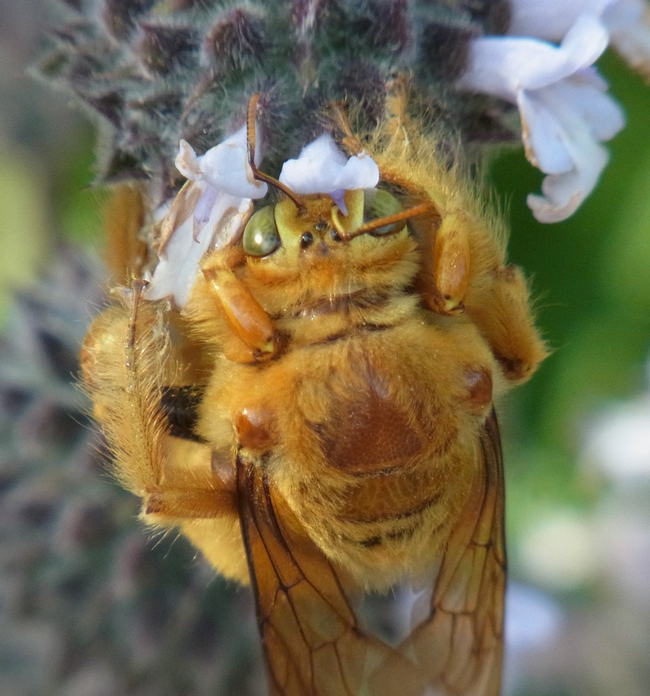Winter is when gardeners plan next year's plantings and other changes to our gardens. One consideration in planning a bee garden is creating bee observation spots, along with acquiring tools for bee observation. For many folks this includes photographing bees. Bee photography is challenging and rewarding; here are some tips:
1. Elaborate, expensive equipment is not necessary. I take many of the photos at the Haven with Ricoh CX5 point-and-shoot camera. It has very good macro capabilities for a point-and-shoot that allows me to get nice close bee shots.

2. For action shots, my camera is a Canon Rebel T3i with a 55mm to 250mm telephoto lens. I use the "sport" setting that shoots multiple frames per second, which allows me to shoot bees "in action" as they come and go from flowers.

3. Light. Bees will move if a shadow is cast over them. Position yourself so the sun is in front to avoid making shadows. Photography in full sun at mid-day creates harsh shadows and is difficult. Shade umbrellas help, or try to find a spot in light shade. Although there may be less bee activity, late afternoon is a great time to take bee photos.
4. Time of day. In general bees are most active mid-day, although there are exceptions. Carpenter bees are active until dusk; the charismatic yellow male Valley carpenter bee pictured above becomes active around 3pm. Male longhorned bees form each day's sleeping aggregation at dusk and leave at sunrise the next morning; these are an excellent photography subject. The photos of longhorned bees shown here are from my own garden because of their dawn and dusk schedule.
5. Patience, patience, patience! Plant your bee garden in an area where you can sit comfortably and set up a camera. Target highly attractive plants that bring in a variety of bee species such as salvia and sunflowers.
To view a selection of bee photos from the Haven, visit our Flickr page. Camera and exposure information is included with each photo.
Update February 2016: this blog post from the Xerces Society has more great insect photography tips.